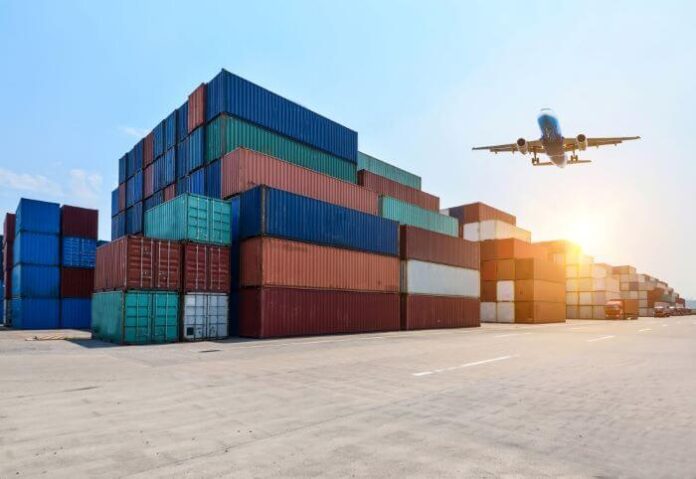Shipping cargo internationally isn’t just about putting items in a box and sending them off. It involves meticulous planning, understanding regulations, and ensuring the safety of your items across borders and oceans.
But don’t be overwhelmed! In this article, we’ll break down the process into simple, manageable steps to make things much easier for you.
From selecting the best quality strapping for your palleted cargo to assessing how prepared your shipment is for international shipping, we will take you through all the necessary steps to help your products arrive in top-quality condition.
How to Prepare Cargo for International Shipping
#1: Prepare Your Goods Correctly
When preparing your cargo for international shipping, you must assess how protected your goods will be during the journey, ensuring they are ready for whatever the transit process may throw at them.
So, the first thing you will need to do is to ensure your goods can be stacked. For many international shipping companies, cargo of all kinds is shipped alongside one another. So make sure your products are well-protected and can be placed alongside, above, or below other goods.
Another thing is that you also need to ensure your cargo can withstand being handled by multiple couriers and the machinery they use to transport packages around their warehouses, like a forklift.
For items travelling by plane, your cargo will need to withstand tilting, which occurs when a plane takes off and lands. Think ahead to guarantee that items are tightly secured and won’t shift during these moments.
If the packages are sent by road, they will likely be competing with vibrations, shocks or sudden stops. Therefore, appropriate internal and outer packaging will be needed to prevent goods from being damaged on the road.
What if the cargo is going by sea? You will need to consider the impact of the motion of the ocean on your packages. While at sea, a ship can move in six different directions and could potentially be caught in a severe storm or rough seas, further increasing the severity of movement.
#2: Finalise Documentation in Advance
Don’t forget to prepare the required shipping documents before your packages are set to be shipped. These mandatory documents include a packing list, invoice, and import-export customs declarations. Air or rail waybills, certificates, arrival notices, a certificate of origin, and a letter of credit may also be required. However, this largely depends on the requirements of the item itself as well as the country receiving the shipment.
To guarantee that all necessary documents are completed and accurate, prepare them in advance and fill in any last-minute information once the packages have been sealed and stacked and are ready for shipping.
#3: Prioritise Functionality
There are many packaging options available that prioritise looks over protection. Choosing a more aesthetically pleasing packaging will make your product look more appealing to a customer. This appeal, however, means little if the items arrive damaged or broken.
So, when shipping internationally, you must consider how much handling your product will undertake as it is passed along the shipping line before reaching its final destination. Sturdy packaging may have slightly less outer appeal, but it will raise the chances significantly of your cargo reaching the customer in good condition.
#4: Invest in Premium Packaging
If you are sending cargo or packages overseas, investing in double-walled or reinforced boxes should be the new standard for your business. The additional protection this packaging provides may be a larger investment initially. Still, it will do an excellent job minimising damage during the shipping process, saving you money in the long run.
The two-layered corrugated cardboard is available in various sizes and weight capacities, allowing you to have the perfect option for any shipment size. For larger goods, consider creating or palletising the boxes, as it will significantly improve the structural integrity of the shipment. You can go one step further and shrink-wrap these palletised goods to help protect against rain and other environmental damage.
Additionally, you should never underestimate the importance of internal packaging. For smaller containers, using packing peanuts or air cushions is an excellent way to fill empty spaces. However, with bigger items, more substantial internal packaging will be required.
When items travel long distances, they will typically be handled by multiple couriers, and should the empty spaces within the parcels not be filled appropriately, the chances of items getting damaged dramatically increase.
All box edges should be taped using the H-taping method, whereby the edges and seals of the box are secured using high-quality packing tape. This will prevent boxes from becoming loose or undone through transit.
#5: Assess Size Limits
When selecting the appropriate parcel packaging you hope to use, it is vital to obtain accurate measurements of the size and weight of your total delivery to ensure what you choose can handle the weight of the item without being damaged.
This is particularly important for heavy or oversized parcels, which will require packaging specially made to handle heavier goods. Investing in materials that are better equipped for the job will save you time and money in the long run.
#6: Consider Customer Reviews
A simple but effective way to properly prepare your cargo for international shipping is by listening to feedback from your customers. If customers report that goods are arriving damaged or missing, it is a clear indication that your efforts to properly prepare your products are inadequate.
Consider following up with customers on occasion to get their thoughts and opinions about how their products or shipments have arrived and whether they met their expectations or not.
When you get this feedback, carefully consider it the next time you are preparing your cargo for shipping. That can save your business hassle and unhappy customers in the future.







